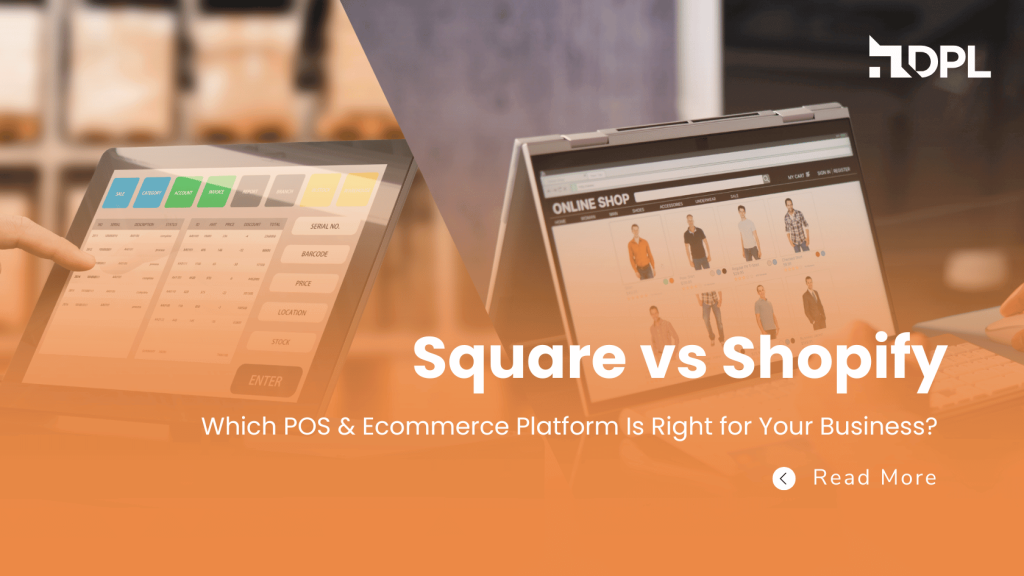Today’s small business owners require more than an ordinary cash register or basic online storefront. Currently, what they require is a connected platform that can handle sales through both online and in-person channels. Such spaces have two major players now: Square vs Shopify.
To the uninitiated, these two systems may appear similar. In fact, under the hood, they have differences built with diverse priorities. Square started out as an integrated system for physical transactions and then added online selling tools. Shopify, on the other hand, started as an e-commerce platform and added a robust retail offering to its toolbox.
So, if you’re a seller looking for guidance on what would suit you better, this comparison is exactly what you need. We will divide the two sides of the differences between Square and Shopify into:
- Ecommerce capabilities
- Pricing structures
- Hardware options
- Integration flexibility
- Ideal use-case scenarios
Quick Overview of Square and Shopify: Which Platform Fits Your Sales Model?
Square and Shopify are both top contenders in the POS and ecommerce space, but they serve different needs and were built with different goals in mind.
Square focuses on simplicity and ease of use, offering a mobile-first POS system that’s ideal for handling in-person transactions, especially for small and medium-sized businesses. It’s a great choice for those seeking a low-cost, straightforward way to process sales, whether on the go or at a physical storefront. While Square has added ecommerce functionality over time through its Square Online platform, its main strength still lies in serving brick-and-mortar retailers.
Shopify, on the other hand, was designed from the start as a robust ecommerce solution. It offers a comprehensive suite of tools for online selling, including customizable websites, marketing automation, and third-party integrations. Shopify also features a robust POS system, making it well-suited for omnichannel businesses that want to manage both their online and in-person operations through a single, unified platform.
Here’s a quick comparison table to get you oriented:
| Feature | Square | Shopify |
| Best for | In-person-first sellers | E-commerce-first sellers |
| POS Pricing | Free plan available | POS Lite (Free), POS Pro ($89/mo/location) |
| Ecommerce | Basic, improving | Full-featured ecommerce store builder |
| Hardware | Simple, sleek options | iPad-based, more complex setup |
| Integration | Standalone or third-party tools | Fully integrated POS + online store system |
Bottom line: Square works well for brick-and-mortar shops expanding online. Shopify is great for online-first businesses looking to add retail.
Square POS vs Shopify POS: Which Offers the Better In-Store Experience?
Both Square and Shopify deliver strong POS tools, but the user experience and features differ.
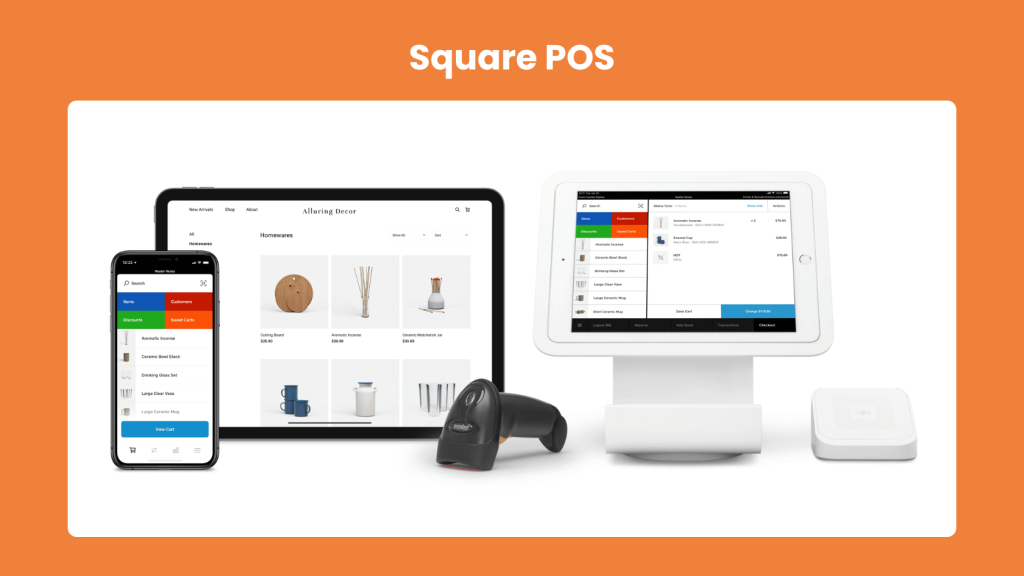
Square POS System
As a frontrunner in the point-of-sale system market, Square offers four different POS software options:
- 1 regular point-of-sale app
- 3 other software dedicated to restaurants, retail, and appointments.
They all offer powerful functions for tracking inventory (both online and in brick-and-mortar stores), managing customers and orders, and providing real-time analytics.
Square POS Pros
- Simple, intuitive checkout on mobile or tablet
- Quick setup, even for tech novices
- Auto-syncing inventory
- Offline mode for uninterrupted sales
- Built-in tools for managing tips, taxes, and discounts
- Free to get started
Shopify POS System
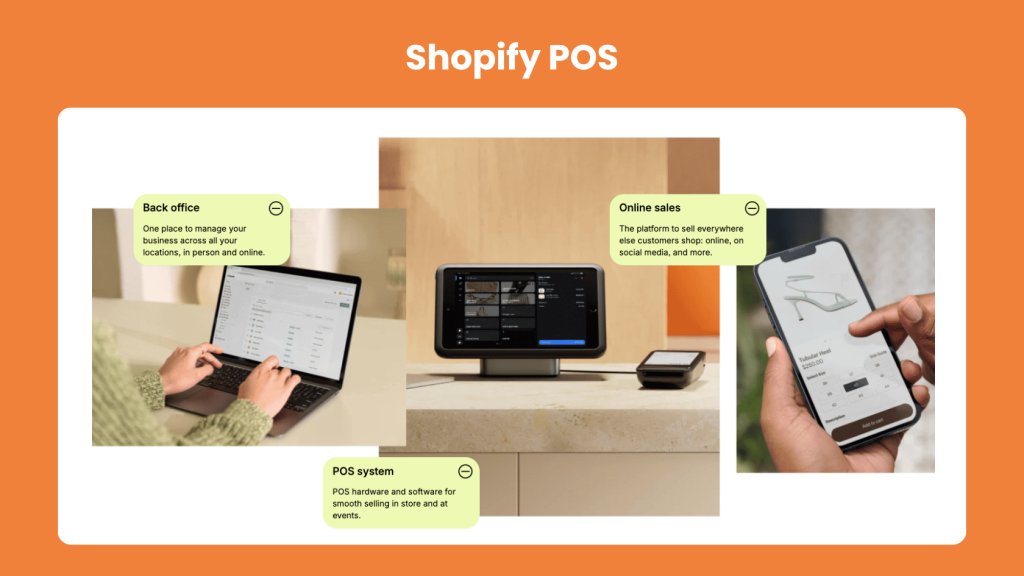
Shopify POS system offers industry-leading features for easy product, employee, and inventory management. The point-of-sale software allows for unlimited item additions, automatic product categorization, and the creation of product variations based on materials and colors.
Shopify POS Pros
- POS Lite comes with every Shopify plan
- POS Pro ($89/month/location) adds:
- Detailed staff roles and permissions
- Smarter inventory tracking across locations
- Buy online, pick up in store (BOPIS) options
- True omnichannel tools
- Access to Shopify’s massive App Store
Pro Tip: Square is ideal for small vendors who want a fast and easy setup. Shopify Pro is better suited for multi-store retailers that require sophisticated retail features.
Shopify vs Square for Ecommerce: Who Wins the Online Selling Battle?
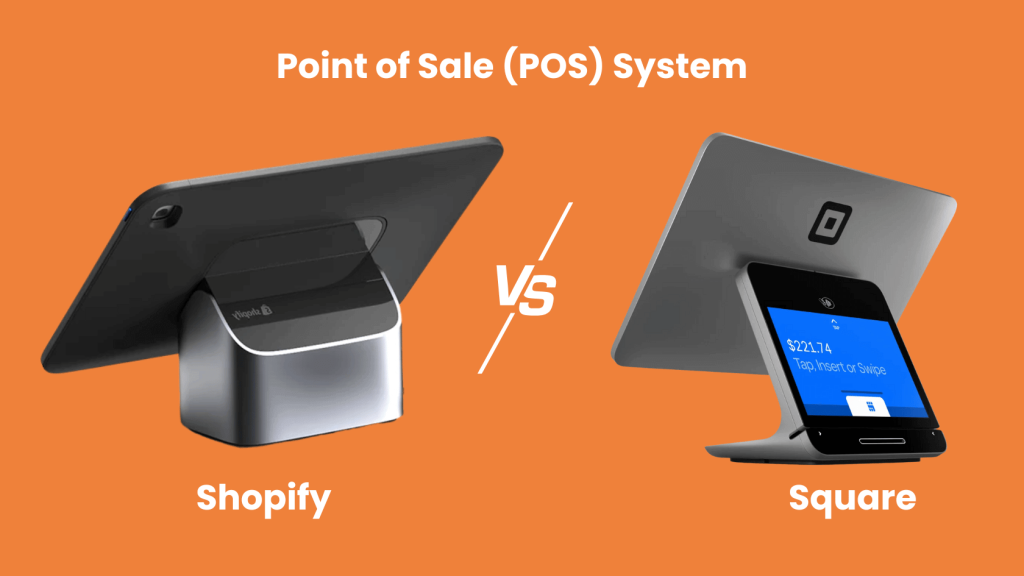
This is where Shopify really pulls ahead.
Shopify Ecommerce
- Industry-leading ecommerce features
- 100+ professionally designed themes
- Advanced SEO, analytics, blogging, and CRM tools
- Vast App Store with thousands of integrations
- Scalable for growth from startups to enterprise
Square Online
- Powered by Weebly, designed for simplicity
- Great for basic online storefronts
- Free plan available
- Limited design and customization options
| Ecommerce Feature | Shopify | Square |
| Themes & Templates | 200+ themes | 25+ themes |
| Marketing (Blogging) | Basic blogging features & basic SEO parameters | Basic blogging features using the Stories tool |
| Product Variants | Advanced control | Limited variation support |
| App Ecosystem | 8,000+ apps & plugins | More limited options |
| Social Media Integration | Yes | Yes |
| Scalability | Highly scalable from solo seller to enterprise | Best for micro/small businesses |
Pro Tip: If you need tools for marketing campaigns, global shipping, or fulfillment from multiple locations, Shopify is the better choice.
Square vs Shopify Pricing: What’s the Real Cost of Ownership?
Let’s look at what you’ll actually spend.
Square
- POS software: Free
- Ecommerce: Free basic plan; upgrades start at ~$29/month
- Hardware:
- Square Reader: $0
- Square Terminal: $299
- Square Register: $799
- Payment fees:
- 2.6% + 10¢ for in-person
- 2.9% + 30¢ for online
Shopify
- POS Lite: Free with all plans
- POS Pro: $89/month/location
- Ecommerce Plans:
- Basic: $39/month
- Shopify: $105/month
- Advanced: $399/month
- Hardware: Requires iPad + Shopify hardware
- Processing fees: ~2.7%, varies by plan
Pro Tip: Square’s lower initial costs are great for bootstrapped businesses. Shopify is more expensive, but it offers broader ecommerce and retail capabilities.
Hardware Comparison: Square vs Shopify POS Setup
When it comes to hardware, Square keeps things simple with a plug-and-play approach. Its lineup, including the Square Reader, Stand, Terminal, and Register, is designed to work right out of the box. That makes Square an appealing choice for businesses seeking a fast and affordable setup without the need for technical expertise or complicated installations.
On the flip side, Shopify’s POS system typically requires a compatible iPad along with a Shopify card reader or a complete hardware bundle. Setting this up can be more complex and often more expensive. Another consideration is availability: Shopify’s hardware isn’t accessible in every country, which can be a roadblock for international sellers. Square, however, is more widely available across global markets, offering greater flexibility for businesses operating beyond North America.
| Hardware | Square | Shopify |
| POS Terminal | Square Terminal, Register, Stand | iPad + Shopify Card Reader or POS Go device |
| Mobile Payments | Free Square Reader | POS Go or mobile kits |
| Availability | Available globally | Not all hardware is available worldwide |
| Setup Complexity | Plug-and-play | Requires compatible hardware (iPad, stand, reader) |
Note: Square’s hardware is easier to access globally and simpler to start with.
Integration Options: Can You Use Shopify and Square Together?
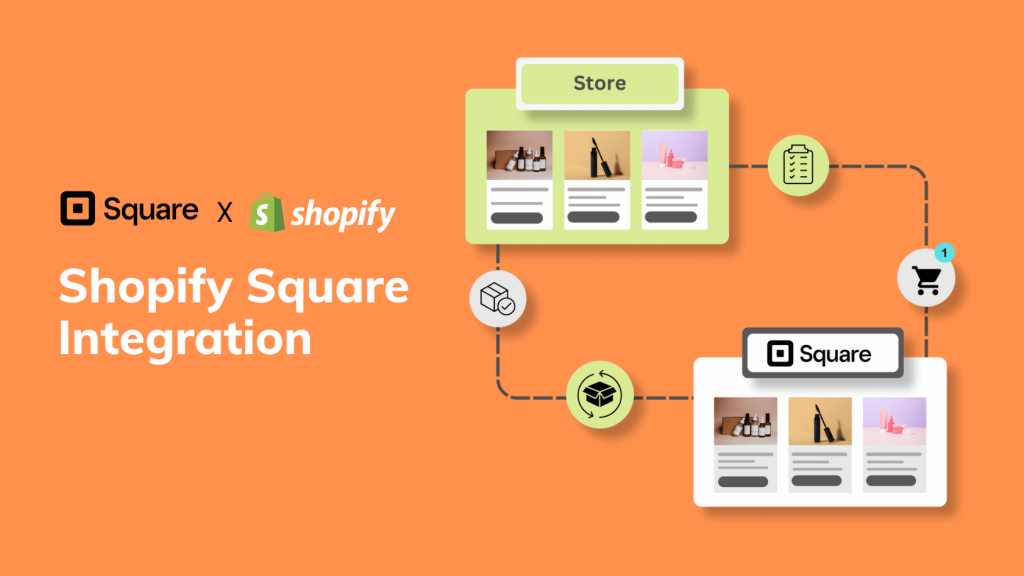
Many small and mid-sized business owners end up using both Square and Shopify, taking advantage of Shopify’s powerful ecommerce capabilities for online sales, while relying on Square’s intuitive POS system for in-person transactions.
But here’s the catch: these platforms don’t natively integrate with each other. That means inventory, customer details, and orders don’t automatically sync between Square and Shopify. This disconnect can lead to frustrating issues like inventory errors, duplicated data, and lots of time spent manually entering information.
To solve this problem, many sellers turn to third-party solutions. One popular option is the integration app from Digital Product Labs’ Shopify-Square Integration App. This tool helps synchronize inventory, orders, and customer information between both platforms in real-time. The result? A smoother operation, accurate stock tracking, and the ability to manage both online and in-store sales from a single workflow, no more manual updates or data headaches.
Square vs Shopify: Which One Should You Choose for Your Business?
When choosing between Square and Shopify, it’s important to consider your unique business model and growth ambitions.
Square is a great match for businesses that primarily operate in person, think pop-up shops, neighborhood boutiques, coffee shops, or service-based ventures. If you want something that’s quick to launch, budget-friendly, and doesn’t require much hardware, Square offers a straightforward, low-hassle solution. It’s especially appealing if you’re looking for a system that’s easy to use and doesn’t require extensive technical expertise or a significant upfront investment.
Shopify, on the other hand, is a better fit for businesses that focus on online sales or plan to expand quickly across multiple sales channels. It’s designed for entrepreneurs who need robust ecommerce tools, customizable storefronts, and advanced features for marketing, data tracking, and inventory control. Shopify is also a smart choice if you already run your online store through their platform and want to unify your physical retail operations for a more seamless and scalable experience.
Shopify vs Square – Choose the Right Path for Your Retail Journey
In conclusion, both Square and Shopify are strong, reliable platforms that shine in different areas of commerce.
Square is a smart pick for sellers who prioritize in-person transactions. It’s easy to use, budget-friendly, and optimized for mobile, with expanding support for online sales. Shopify, meanwhile, is better suited for businesses centered around ecommerce or those planning to grow across multiple sales channels. It comes packed with advanced online selling features and a robust, integrated POS system.
Ultimately, the right choice depends on your business’s unique needs, whether you’re just getting started, building your online presence, or running an omnichannel operation. Take time to evaluate your current sales strategy, future goals, and how you like to manage your operations. That way, you can choose a platform that sets your business up for long-term success.
FAQ: Everything About Shopify and Square POS System
Can I use both Square and Shopify together?
Yes, many businesses use Square for in-person sales and Shopify for online selling. However, Square and Shopify don’t sync data natively. To avoid manual work, you can use third-party integration tools like the Shopify-Square Integration App by Digital Product Labs to sync inventory, orders, and customer data.
Is Square cheaper than Shopify?
Square generally has a lower upfront cost for POS hardware and software, especially if you’re only selling in-person. Shopify, while more expensive, offers advanced ecommerce features that are well worth the investment for online-first or growing businesses.
Which is better for restaurants or service-based businesses?
Square is a better fit for service-based businesses like salons, restaurants, and food trucks. It offers dedicated POS software tailored for those industries, with powerful scheduling and tipping features.
Does Shopify work offline for in-person sales?
Yes, but offline functionality is only available in Shopify POS Pro, which is a paid upgrade. It allows you to accept payments, access certain features, and sync data once you reconnect to the internet.
Can I switch from Square to Shopify or vice versa later?
Yes, switching is possible, but it involves migrating your product data, customers, and order history manually or via import tools. Using an integration app from the beginning can make transitions or dual use much smoother.
Already using both? Use a tool like Shopify-Square Integration App to keep your inventory, customers, and orders synced automatically.
Still deciding? Try the free trials of both platforms and see which one feels right for your workflow. Or drop your questions in the comments, we’re here to help.
